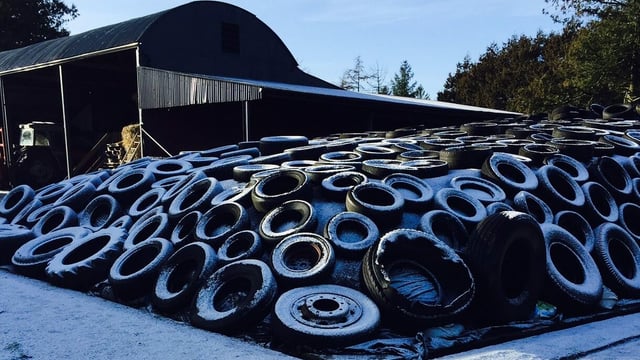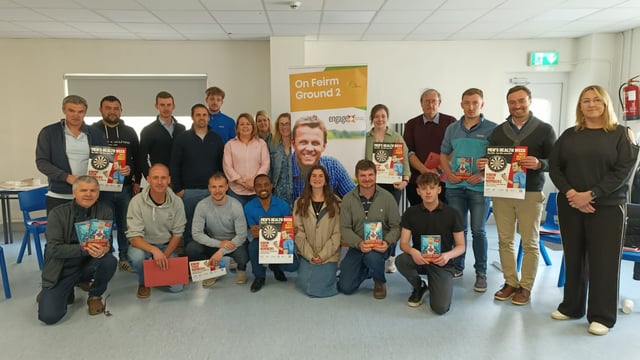Diversification: Getting started as an open farm
Open farms - which allow the public to visit to see the animals and everyday farming activities - are becoming increasingly popular in Ireland.
This diversification gives farmers a chance to broaden their business offerings, engage with the public, and capitalise on Ireland’s popularity as a tourist destination.
Just like private farms, open farms are incredibly diverse.
Depending on where they go, visitors might find themselves feeding emus, walking with alpacas, riding donkeys, or admiring peacocks.
On the activity side, they might learn about food production, use elaborate playgrounds or take part in camping.
For grownups, there are often cafes, organic food shops, cooking schools, and even farm-to-fork supper clubs.
Naturally, diversification is not as simple as flinging open the gates and putting up a sign.
It can be challenging, but there are numerous resources to help farmers take the first steps to diversification.
Agriland talked to Barry Caslin, energy and rural development specialist at Teagasc, about making one’s farm an open one.
Open farms in operation
While unofficial numbers are unavailable, there are dozens of open farms in Ireland.
Caslin said: “I am aware of over 300 farms that have diversified their farm business in Ireland.
“Of those, approximately 50 would be open farms operating nationwide, ranging from small family-run setups to larger enterprises."
He added that the real figure would be higher, but the information on actual diversifications is not captured in National Farm Survey data.
“The exact number will, of course, fluctuate as new farms diversify or some close, but the sector continues to grow steadily.
“These open farms offer a variety of public experiences, including educational tours, farm shops, and petting farms," he said.
Further openings
Caslin noted that there has been “a noticeable increase in farmers exploring open farm models over the past year”.
“Rising interest in farm diversification, combined with a growing demand from consumers for local, authentic rural experiences, has helped drive this uptake,” he explained.
“Many farmers are recognising the benefits of supplementing traditional farming with public engagement activities as a way to create additional income and strengthen their resilience against market volatility.”
Considerations before opening
According to Caslin, farmers should carefully evaluate several factors before opening their farms to the public.
Key considerations include:
- Understanding local zoning and regulatory requirements for public access;
- Assessing infrastructure needs such as parking, facilities, and safety measures;
- Ensuring there is a clear business plan outlining potential revenue streams and costs;
- Considering the impact on day-to-day farm operations and labour;
- Evaluating market demand in their area for farm visits or products;
- Being prepared to manage liability and insurance requirements;
- Recognising the time commitment needed for customer service and public interaction.
Misconceptions
Running a successful open farm is more complicated than it might appear.
And even farmers can sometimes get the wrong impression before they embark on this adventure.
"One common misconception is underestimating the complexity of running public-facing activities,” Caslin said.
“Some farmers think that just opening their gates is enough, but successful open farms require careful planning, marketing, and attention to customer experience."
He mentioned that another mistake is overlooking the importance of compliance with health and safety regulations and planning permission requirements.
“Additionally, some may expect quick financial returns, whereas building a loyal customer base can take time.
"It's also important not to spread resources too thin by trying to do too many things at once," he added.
New skills
Beyond traditional farming skills, Caslin said that new competencies become essential when opening up a farm.
Important skills recommended by Caslin include:
- Marketing and social media to attract and engage visitors;
- Customer service and communication skills for dealing with the public;
- Event planning and management if hosting group visits or special events;
- Basic business management to track revenues, expenses, and profitability;
- Health and safety management to ensure a safe environment for visitors;
- Understanding regulations related to public access, food sales, and animal welfare.
“Farmers who invest time in learning these skills or who bring in external expertise are more likely to succeed,” he said.
“Many farms that diversify are driven by women who marry into a farm and see opportunities which nobody else ever saw.
"In many cases, these women have brought skills and ideas and have rejuvenated rural areas by not being afraid to pursue their ideas.”
Resources
While running or starting an open farm can be daunting, help is available.
“The Local Enterprise Office (LEO) plays a key role in supporting small rural businesses, including farm diversification initiatives," Caslin said.
"The LEO provides advice, training, and mentoring to help farmers develop robust business plans, improve marketing strategies, and connect with potential customers.
“They can also guide you through accessing funding and grants for your enterprise.”
In addition to LEO supports, the LEADER Programme is an EU-funded initiative designed to boost rural development across Ireland.
“LEADER offers financial assistance to projects that foster sustainable rural tourism and agritourism activities, including open farms,” Caslin explained.
“This funding helps with infrastructure, marketing, and new enterprise development"
Farmers can find their local development agency through the Irish Local Development Network (LDN), which coordinates LEADER efforts.
Teagasc also provides guidance tailored to farm diversification through its Farm Business Options programme.
“This initiative helps farmers explore diversification opportunities, offers advice on business planning, and supports accessing grants and training relevant to open farm enterprises,” Caslin said.
Detailed fact sheets and supplementary materials are available on the Teagasc rural development page of their website.
As mentioned earlier, upskilling is an important part of preparing to run an open farm, and farmers can take advantage of a variety of Education and Training Board (ETB) courses.
These courses focus on areas such as business management, marketing, customer service, event planning, and other skills needed for diversification.
“Local ETB offices offer flexible part-time and online options designed to fit around farming commitments,” said Caslin.
Finally, for more specialised skills and knowledge development, FetchCourses.ie is a portal listing available training programmes for farmers and rural entrepreneurs, including those related to diversification, agri-tourism, and rural enterprise growth.
‘Tis the season
Seasonality brings challenges to any business, especially in the agricultural sector. And open farms are no exception.
According to Caslin: “Seasonality is a challenge, but there are strategies to manage it.”
Strategies he recommends include:
- Diversify activities to include indoor options like workshops or farm shops that can operate year-round;
- Host seasonal events tied to holidays, harvests, or school calendars to keep flow steady;
- Develop an online presence to promote farm products and experiences beyond the farm itself;
- Collaborate with local tourism networks to attract visitors during off-peak times;
- Plan staffing and operating hours flexibly to match busy and quiet periods.
“Being adaptable with offerings helps maintain income throughout the year,” he said.







